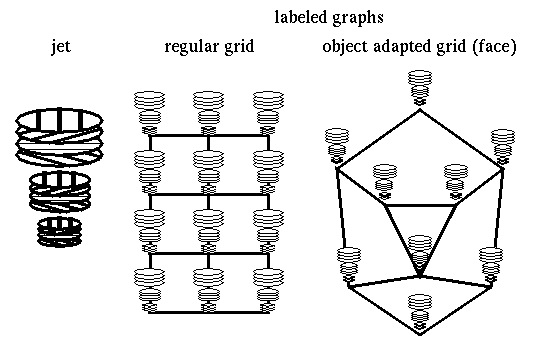Most of the object and face recognition projects are based on labeled graphs for object representation. A labeled graph is a set of nodes connected by edges; nodes are labeled with jets, bundles of wavelet responses; edges are labeled with distances. Thus, the geometry of an object is encoded by the edges while the grey value distribution is patchwise encoded by the nodes (jets). Notice that single graphs in this form can only represent 2-D views and not the 3-D structure of objects. But 3-D information can be processed by integrating several graphs.

Graphs can easily be translated, rotated, scaled, and elastically deformed, thus compensating for most of the variance which one is faced with in a recognition process. New graphs can be generated by matching a stored graph to an image and extracting the jets from the node locations found by the elastic graph matching process. Labeled graphs are appropriate to represent single objects. For the representation of a whole class of objects the bunch graph has been developed.